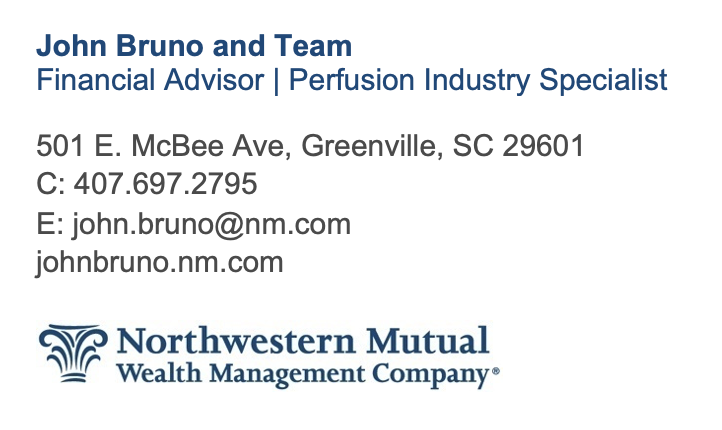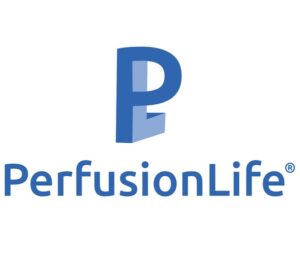Guest Speaker: John Bruno on 1099 Retirement Options

Making the jump from full-time W2 employee to a 1099 independent contractor has many considerations and retirement planning should be near the top of the list. In this post, we will hear from Financial Advisor John Bruno (who is married to a perfusionist) about the several ways in which you can continue to save towards retirement while being a 1099 independent contractor.
Retirement Planning
Let’s start off by underlining the importance of proper retirement planning and the amount of time that should go into it. We need to think about retirement as the longest vacation we will ever take, so shouldn’t that vacation be well thought out, stress-free, fun, and create moments/memories that last forever? We can give ourselves this opportunity in retirement during the finite amount of time we have in our working careers and saving portions of our income along the way.
Where Can I Save For Retirement?
Option 1: Roth or Traditional IRA
An IRA (Individual Retirement Account) is one of the simplest ways to save for retirement. In 2022 you can save up to $6,000 (increasing to $6,500 in 2023) into a Roth or Traditional IRA and if you are 50 years or older, there is an additional $1,000 ($7,000 total) you can contribute.
Contributions to a Roth IRA are done after tax and cannot be deducted from income tax but the withdrawals after the age of 59 ½ are tax-free. There are also IRS income limits that can prohibit most perfusionists from contributing.
Contributions to a Traditional IRA are tax-deductible but withdrawals in retirement are 100% taxed.
Option 2: SEP IRA
A Simplified Employee Pension IRA allows for tax-deductible annual contributions of $61,000 (increasing to $66,000 in 2023) or up to 25% of compensation or net self-employment earnings, whichever is less. These plans are ideal for people trying to maximize annual IRS limits on contributions to a retirement account.
Option 3: Solo 401(k) or Solo Roth 401(k)
A Solo 401(k) works very similarly to an employer offered 401(k) in that contributions are pre-taxed and distributions after the age of 59 ½ are 100% taxed.
There are several advantages to a Solo 401(k) because in 2022, you can contribute $61,000 (increasing to $66,000 in 2023), plus a $6,500 (increasing to $7,500 in 2023) catch-up contribution (if 50 years or older) or 100% of earned income, whichever is less. You can also receive an additional contribution of up to 25% of compensation under certain tax filing circumstances.*
A Solo Roth 401(k) is also an option, which mimics the tax treatment of a Roth IRA and allows you to contribute well above the regular Roth limits without income restraints.
Option 4: SIMPLE IRA
A Savings Incentive Match Plan for Employees works very similarly to a SEP IRA but is designed for companies of 100 employees or smaller. Annual contribution limits are up to $14,000 in 2022 (increasing to $15,500 in 2023), plus a catch-up contribution of $3,000 if 50 or older.
These plans are more complex than the previous 3 options and are very rare among perfusionists.
Option 5: Defined Benefit Plan
Speaking of rare – Defined Benefit Plans are even more rare for perfusionists. They are ideal for self-employed persons with no employees, close to retirement, who can contribute a significant amount of their income to retirement savings.
The upside of Defined Benefit Plans is that they can be used to set up your own pension as a guaranteed stream of income in retirement.
Summary: Which plan is the “best?”
The answer is purely situational and requires a full view of your financial plan in order to make an educated and strategic decision. Each of the options offers its benefits and considerations and should be discussed in the context of an overall financial plan. If you do not have a financial plan prior to making the jump to a 1099 contracted employee, that should be your first step. Identifying spending goals in retirement helps dictate how to save towards retirement and navigate the ever-changing world of taxation.
Please reach out to me for additional questions and help and I’ll be more than happy to be a resource. I work with perfusionists across the country regardless of employment status and offer no-fee assessments, financial plans, and analysis.



More from the Perfusion Life Blog:
- « Previous
- 1
- 2
- 3
- 4



